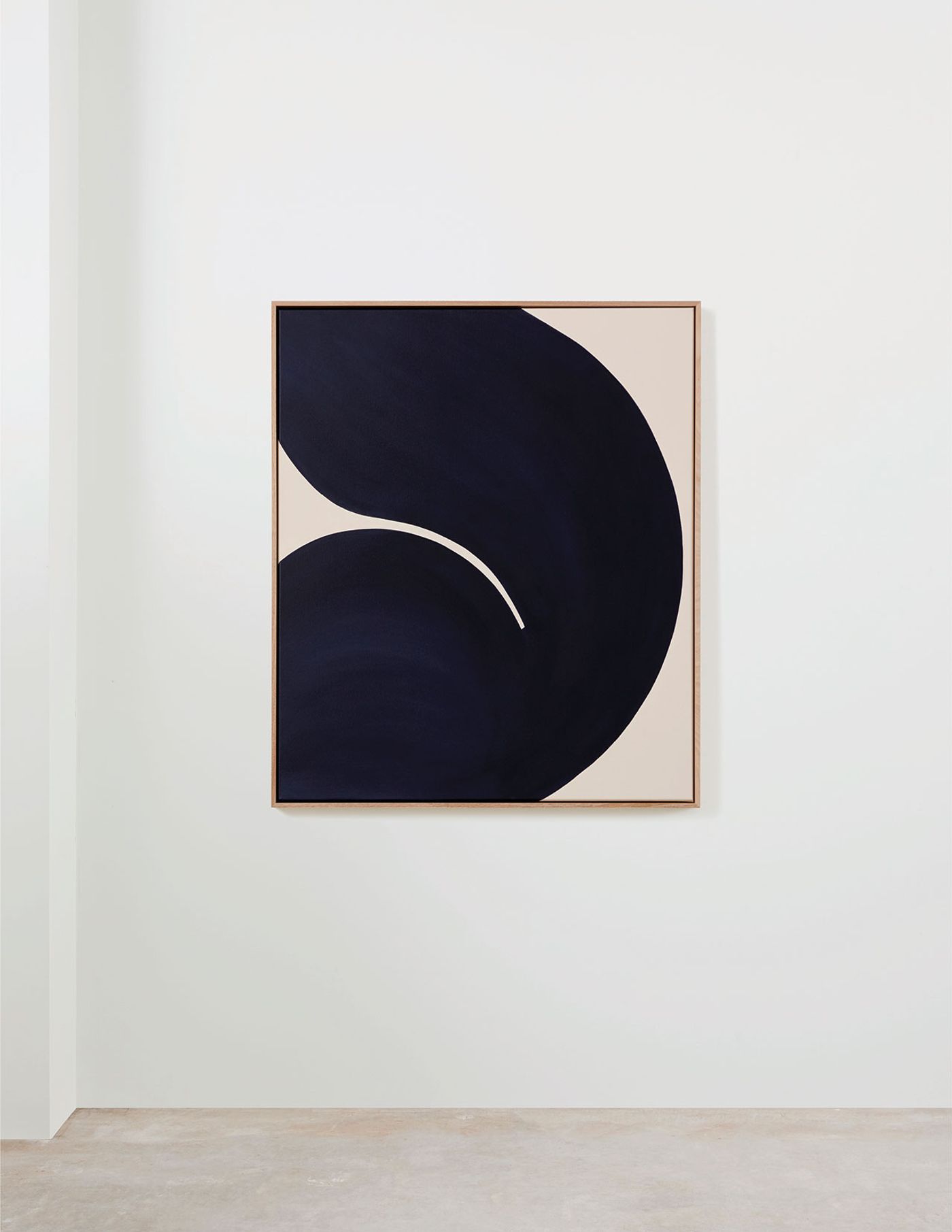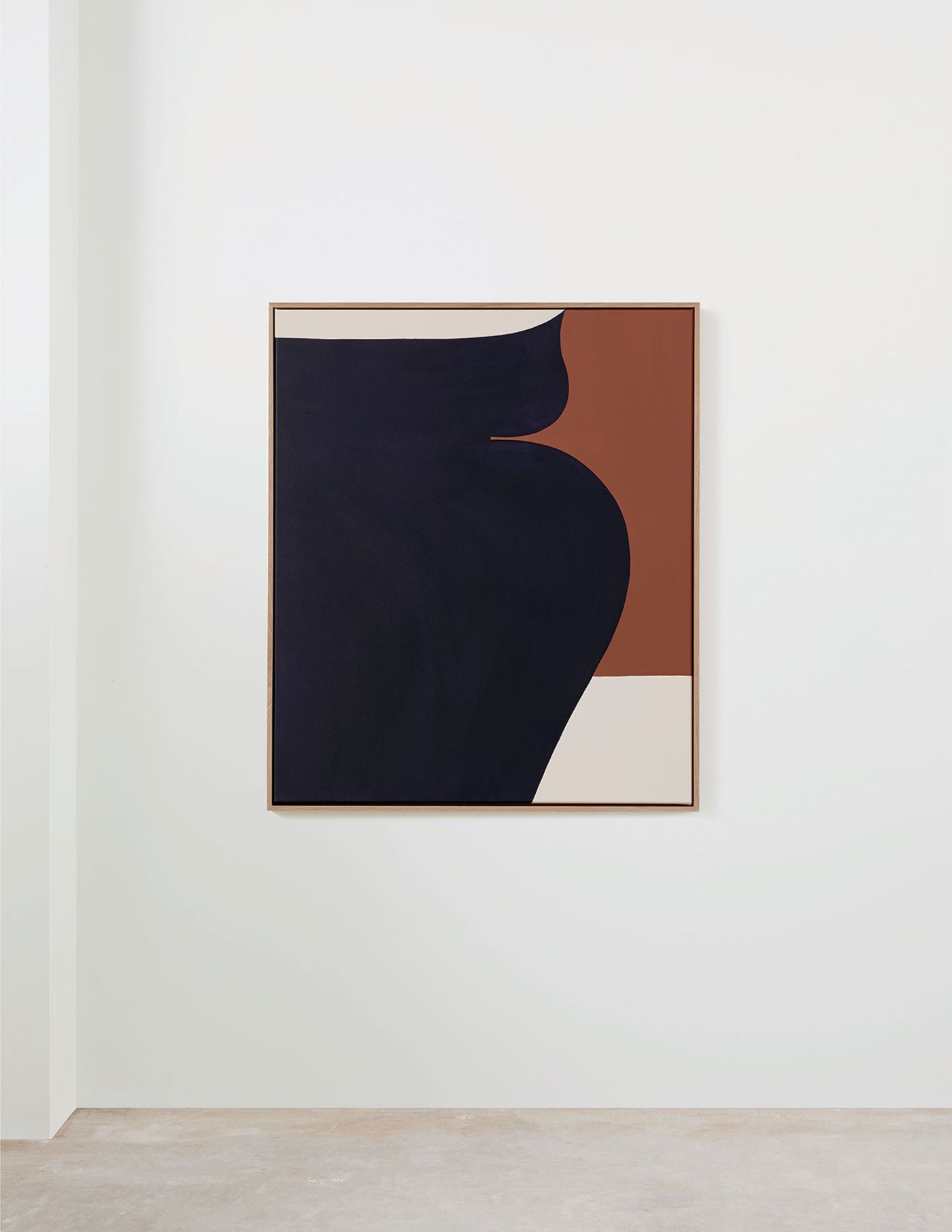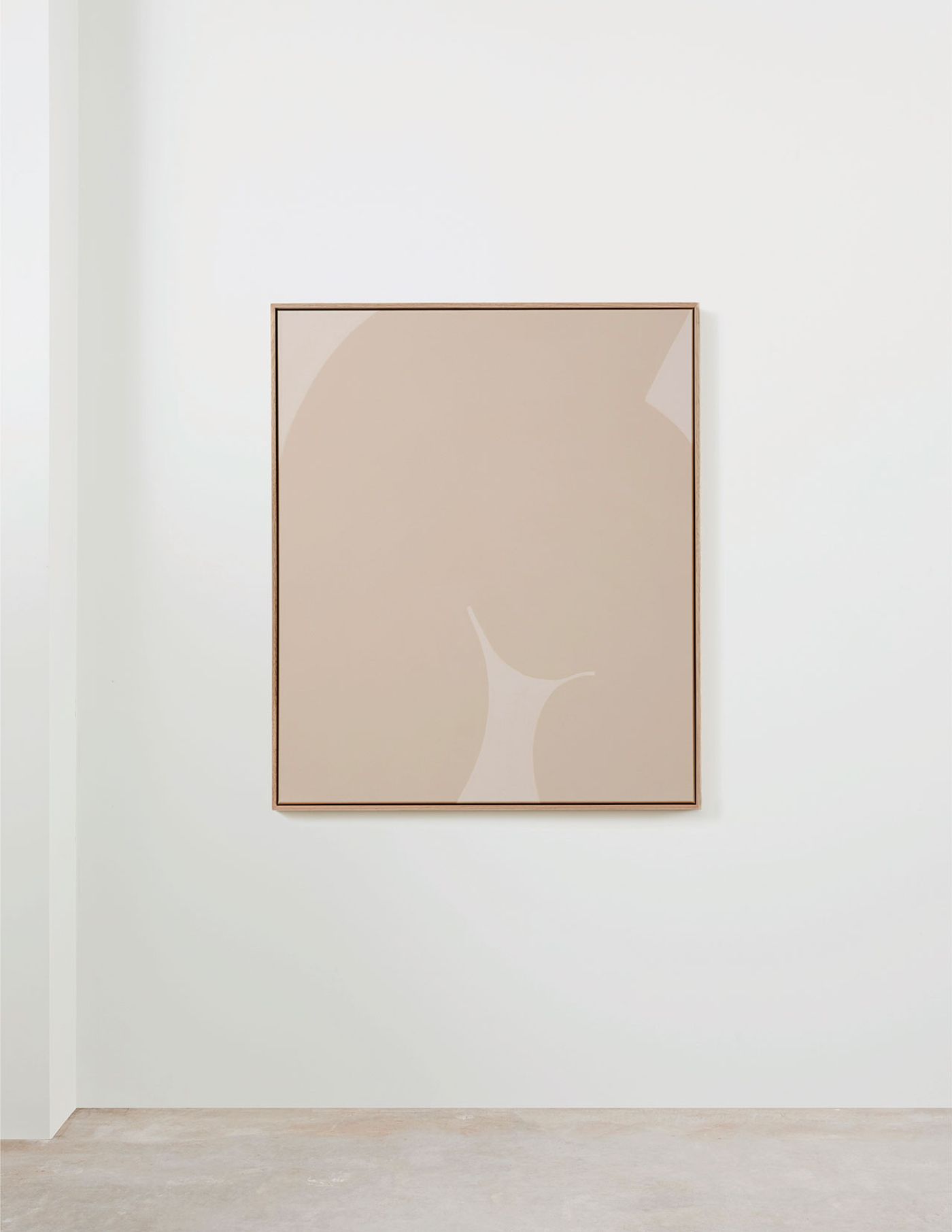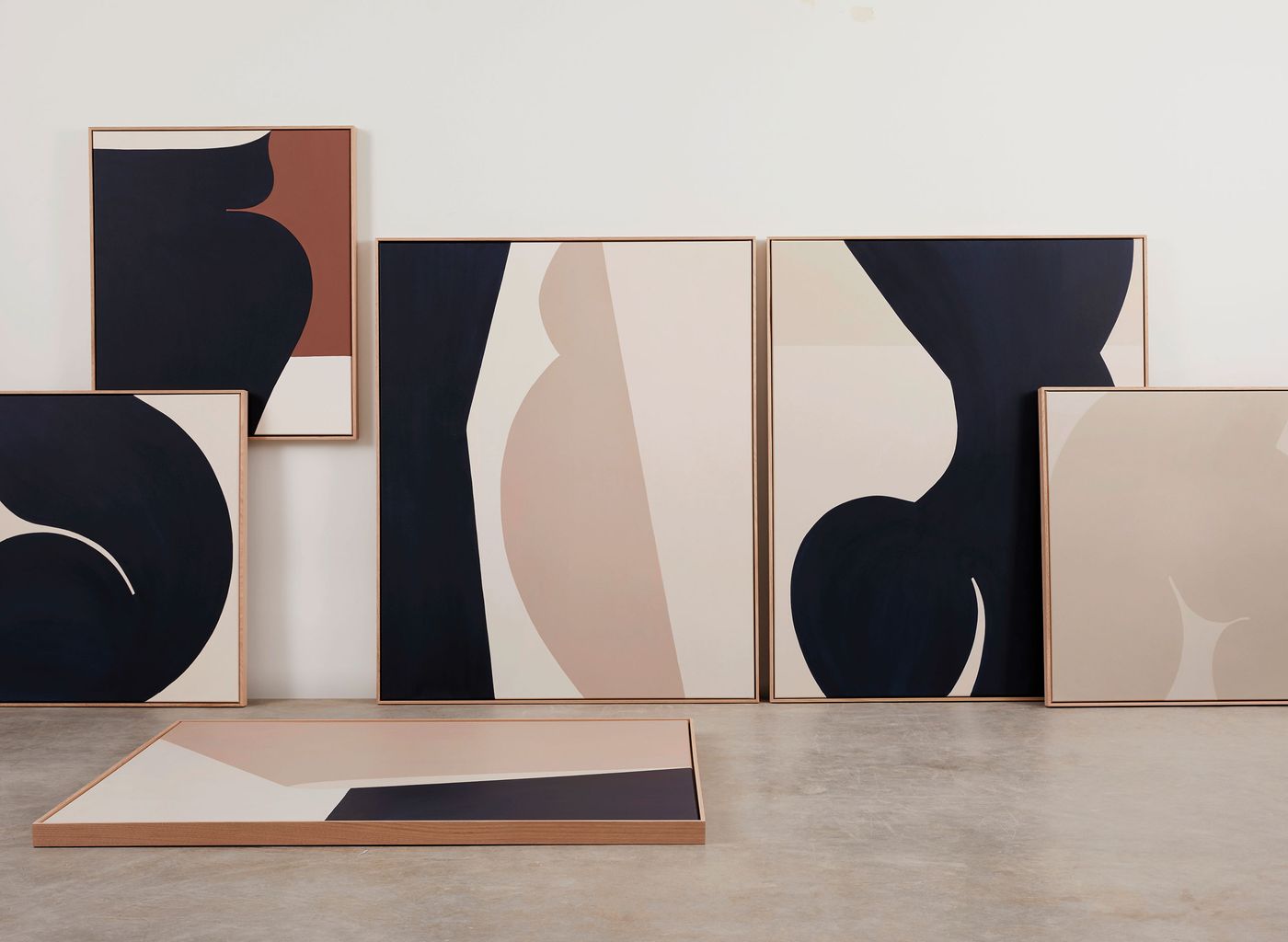
The Polysemous Femininity of Caroline Walls’ Paintings
Words by Eric David
Location
The Polysemous Femininity of Caroline Walls’ Paintings
Words by Eric David
Australian artist Caroline Walls was late to pursue an artist’s life but when she did she dived in wholeheartedly. Intent on exploring the female body and psyche, and informed by her background in graphic design, fashion and art direction, her paintings of female nudes are both highly reductive and unexpectedly sensual. Using an elemental palette of nudes, deep blues and blacks, combined with a strong sense of line and form, Walls’ paintings hover between figuration and abstraction. Imparting a crisp fluidity and a primal corporeality, her female forms loom both substantial and ethereal, emanating a nuanced reading of femininity that digs beneath the societal stereotypes of heightened sexuality. In the age of social media, where selfhood is conflated with and ultimately effaced by self-promotion and the allure of glorification undermines the truthfulness of self-expression, and in light of the #MeToo movement, Walls’ work, which also include drawings, sculpture and print-making, is both timely and auspicious in its empowering sensibility. Yatzer talked with Walls about her artistic aspirations, her studio practice and her unique viewpoint as a female artist.
(Answers have been edited for brevity.)
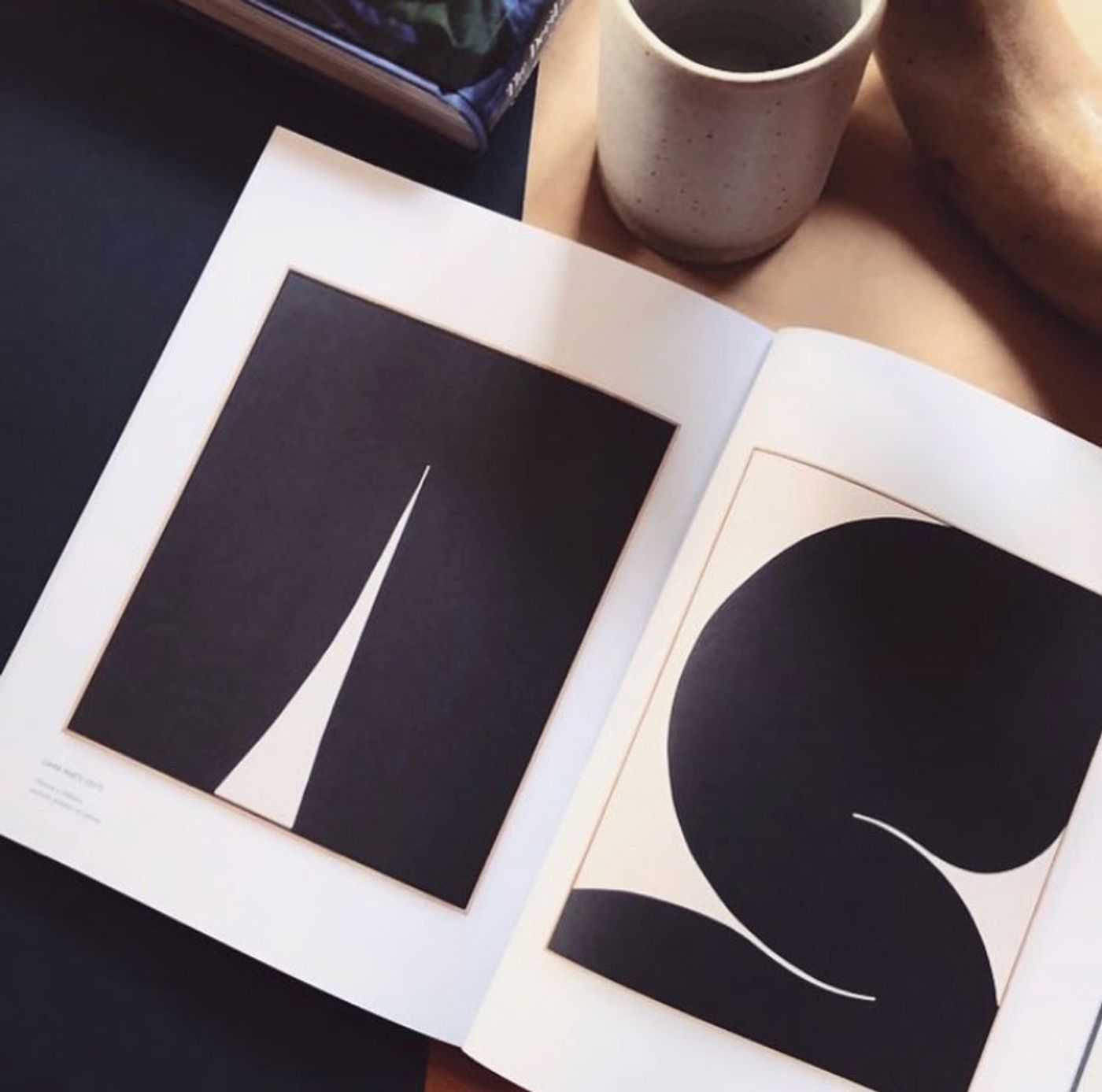
Photo © Caroline Walls.
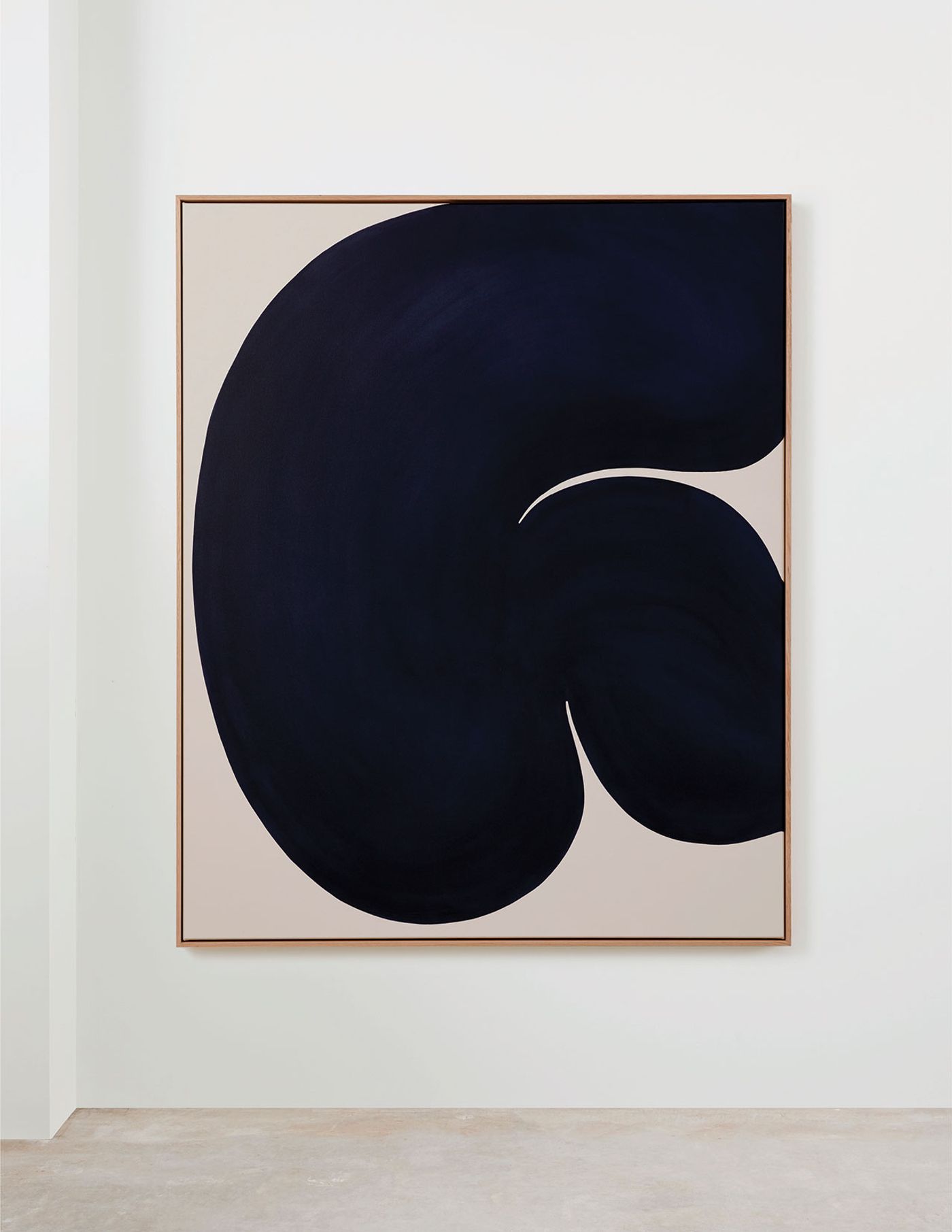
Photo © Caroline Walls.
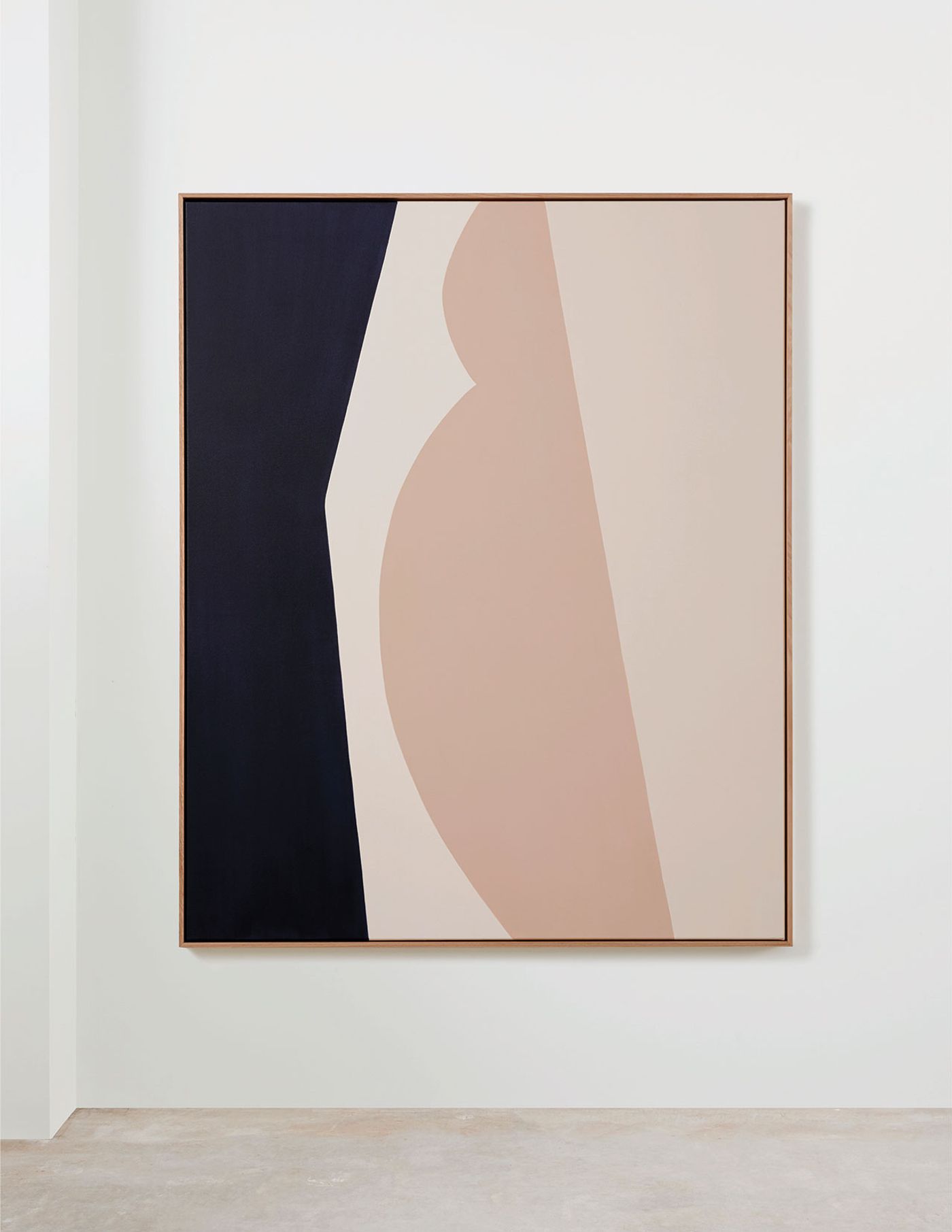
Photo © Caroline Walls.
What was the impetus to becoming an artist? Was it something you always wanted to or did it emerge later on?
I have always had a keen interest in the visual arts and having completed an honours degree in Graphic design, I began working for large-scale International fashion and lifestyle brand agencies as a designer and art director. After years of doing this I craved some creative autonomy and felt a real yearning to explore my own art practice away from the restrictions of clients and design briefs. I returned to Melbourne, Australia, and enrolled in a post-grad in Visual Arts as a way to explore this and haven’t looked back. I certainly never had the intention of becoming a full-time artist; instead it has been a really organic journey and one that I am most grateful for.
How did your previous work as an art director for the fashion and luxury industries influence your work as an artist?
I like to think that this background allows me to approach my art practice with a deeper consideration for and understanding of composition and form, as well as a contemporary approach to aesthetics that may not have been the same had I not worked in the fashion and luxury industries beforehand.
The female form is a focal point in your work. Why did you choose this subject matter and what are you trying to convey?
I think it is really a mixture of things that drew me in to representing and interpreting the female body in my art practice. On a very basic level I really do love the aesthetics of the female form—its curves, solidness, its sensuality. But I’m also interested in what lies beneath the surface, I guess it’s the unseen aspect of a woman that’s so easy to overlook. I am deeply curious about the notion of what it means to be a women in today’s social and political climate, and how women are represented in our current cultural sphere. Ultimately I aim not to transcribe, but rather imply femininity and all that this word can carry with it; strength, fertility, fragility, sexuality, burden and beauty.
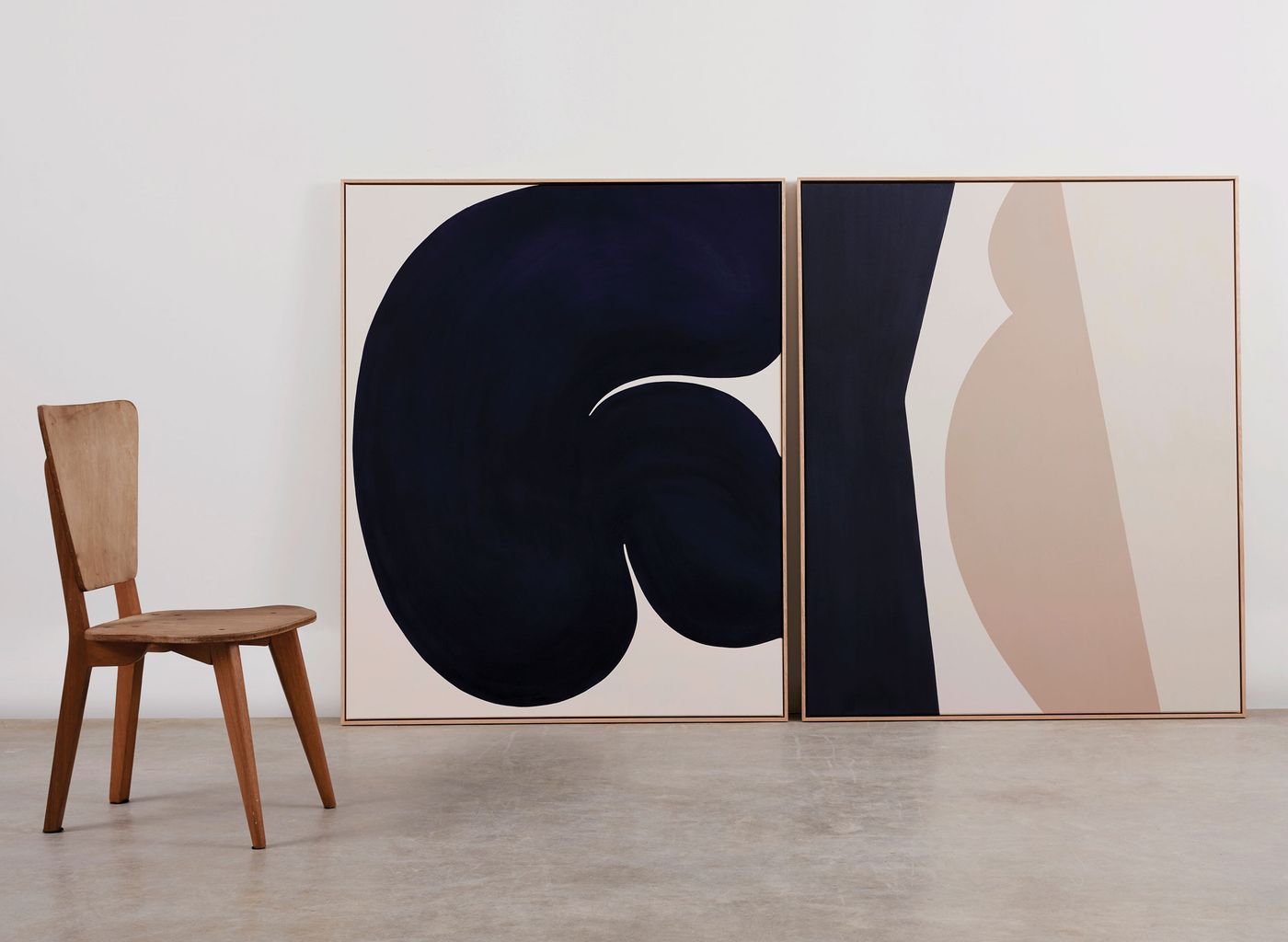
Photo © Caroline Walls.
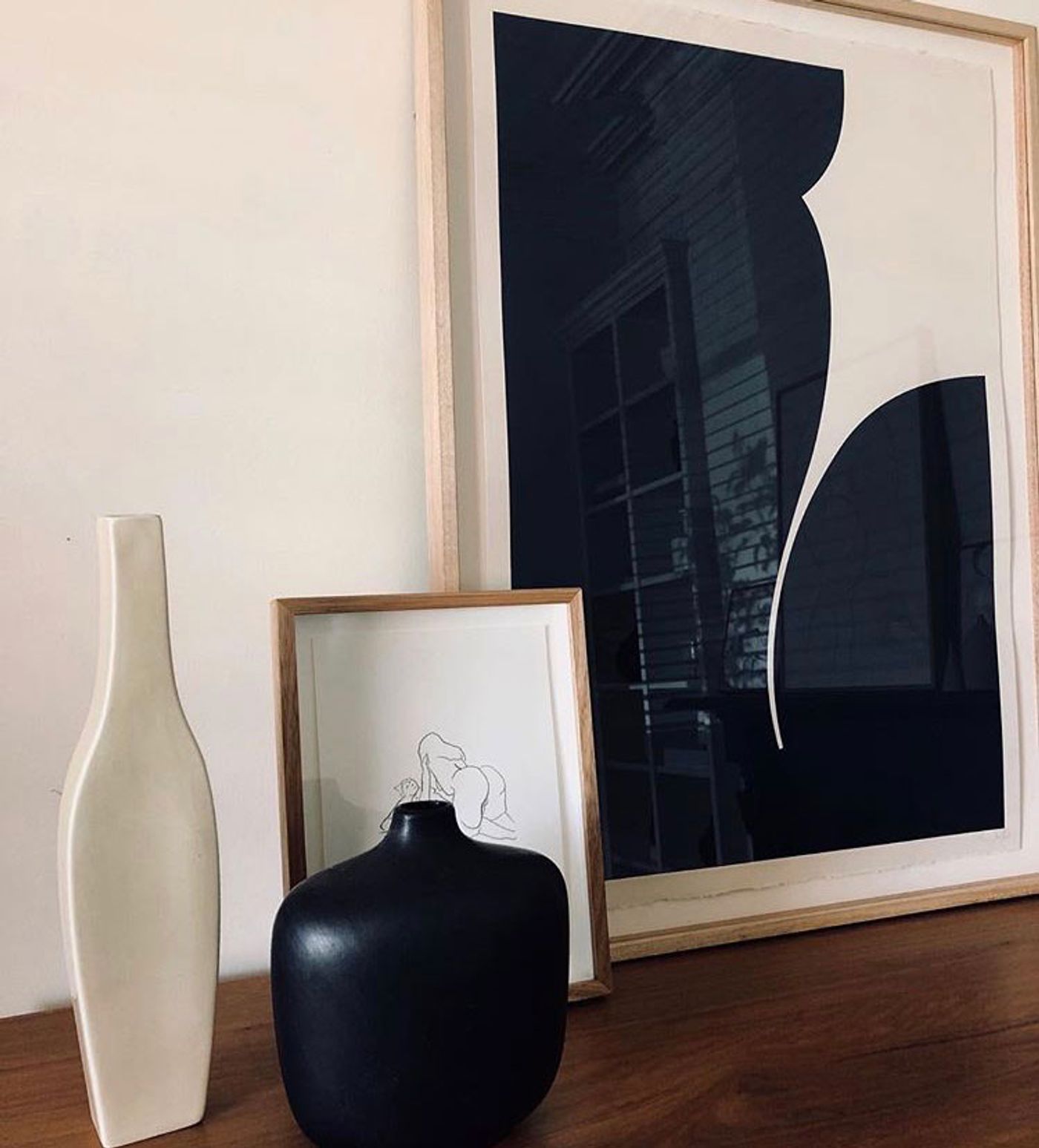
Photo © Caroline Walls.
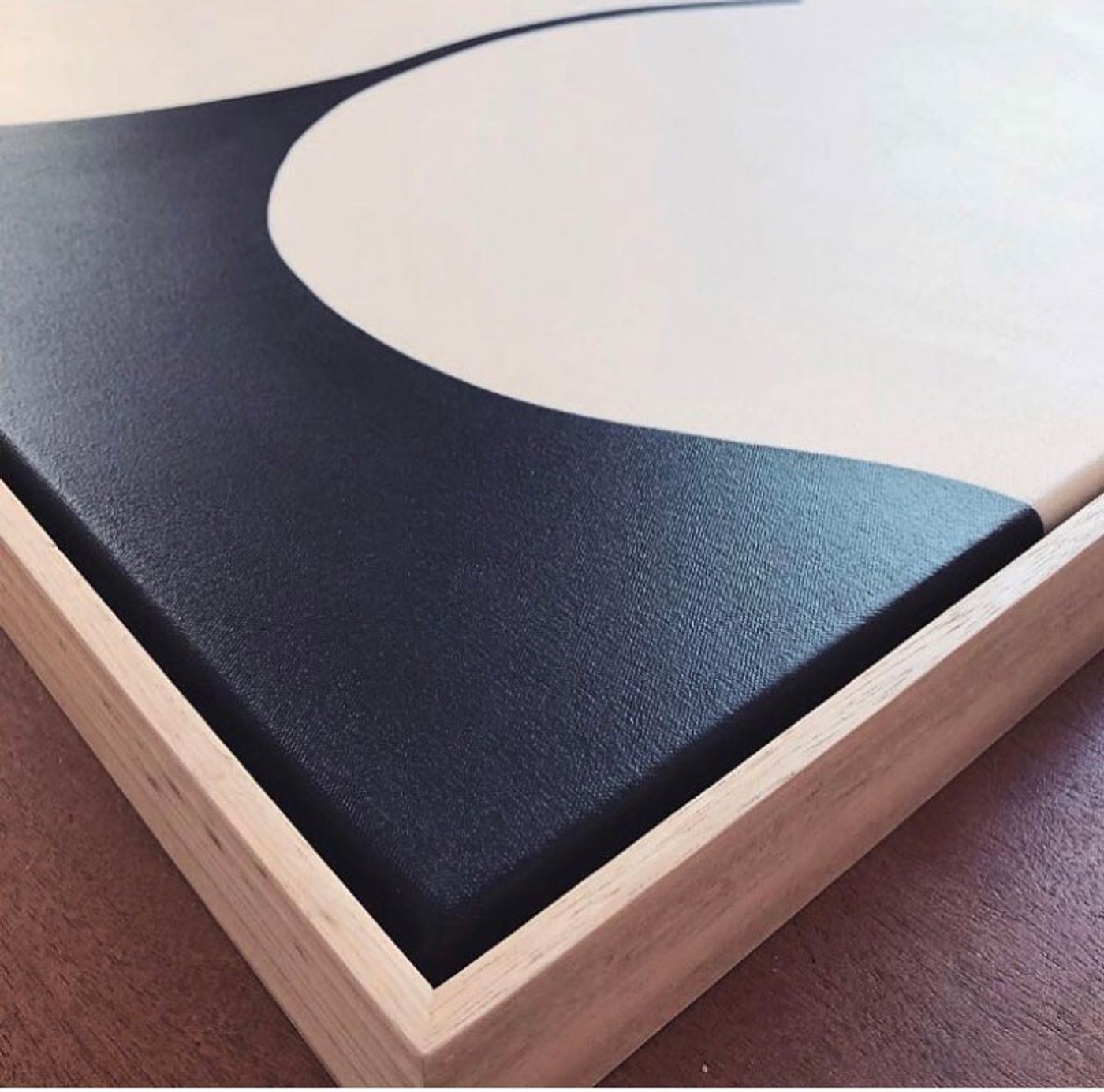
Photo © Caroline Walls.

Photo © Caroline Walls.
With your background in fashion where the ideal female body is very strictly defined, do you consider your work as an artist as a form of pushback or critique to this propagated ideal?
Rather than a pushback on current societal ideals of what a beautiful woman may look like, I’m more interested in seeing (and exploring in my own practice) women artists depicting the female nude without boundaries—which until relatively recently has been cornered by male artists. I am ever curious about the differences between the private and the public self and how outside forces (social media etc.) can impede on a woman’s truest self—the unseen aspect of a woman—and about the way gender lines, sense of self and sexuality plays into our understanding and approach to the world around us. I hope my works can form a small part of that conversation.
With their clearly defined monochromatic forms and strong fluid lines your paintings have a very graphic quality. How did you arrive at this aesthetic and how does it reflect you as an artist?
As I’ve continued to develop my art practice I’ve moved towards a more abstracted response to the bodily forms I create, whereas when I initially began my paintings and drawings were much more figurative. The evolution came about through day to day exploration and discovery—I’m not interested in remaining static with my work and imagine it will continue to evolve and grow with me as my life experiences and knowledge grows too. The process of reduction plays an essential part in the creation of my works, subtracting detail and simplifying forms to create highly abstracted yet hopefully gestural artworks that, although streamlined, still achieve a sense of expression and vitality. It is as much about the lines that I choose to paint as it is about the lines and curves I choose to leave out.
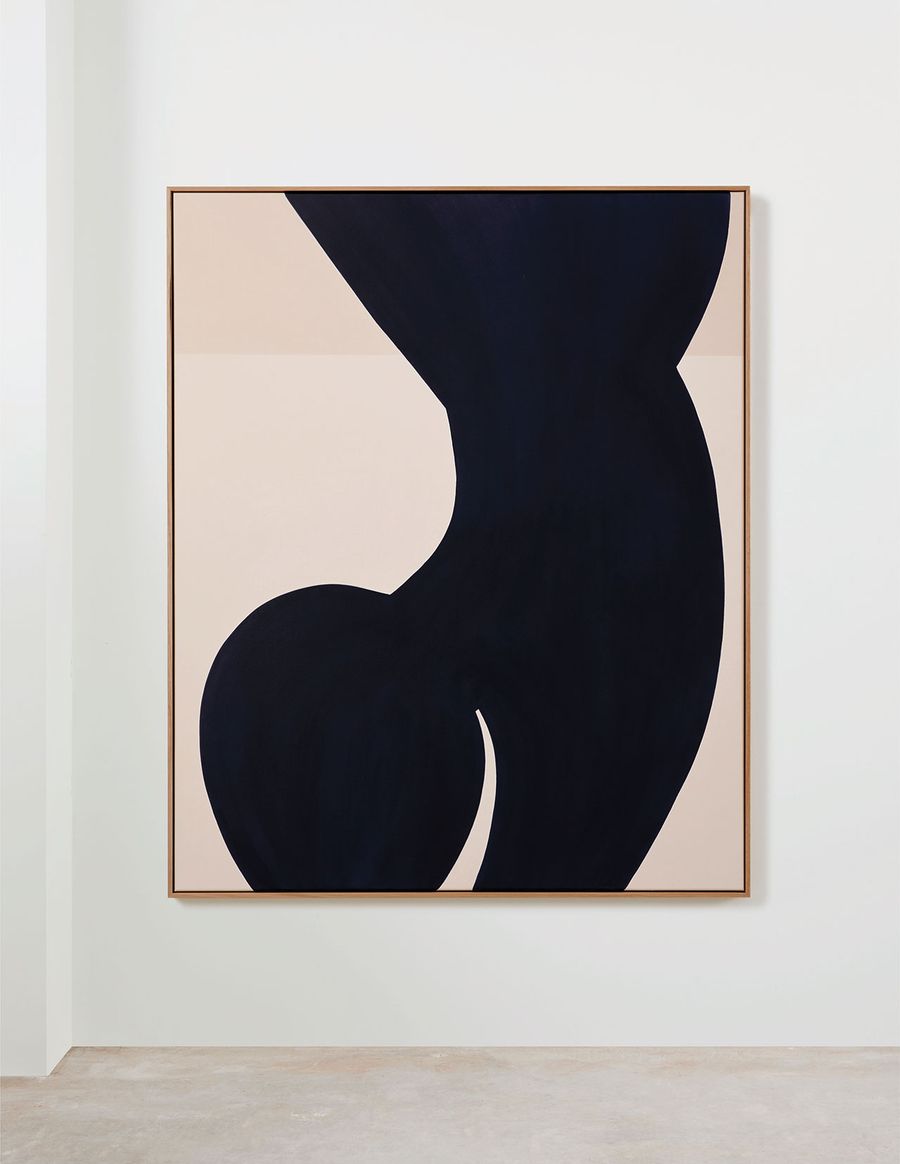
Photo © Caroline Walls.
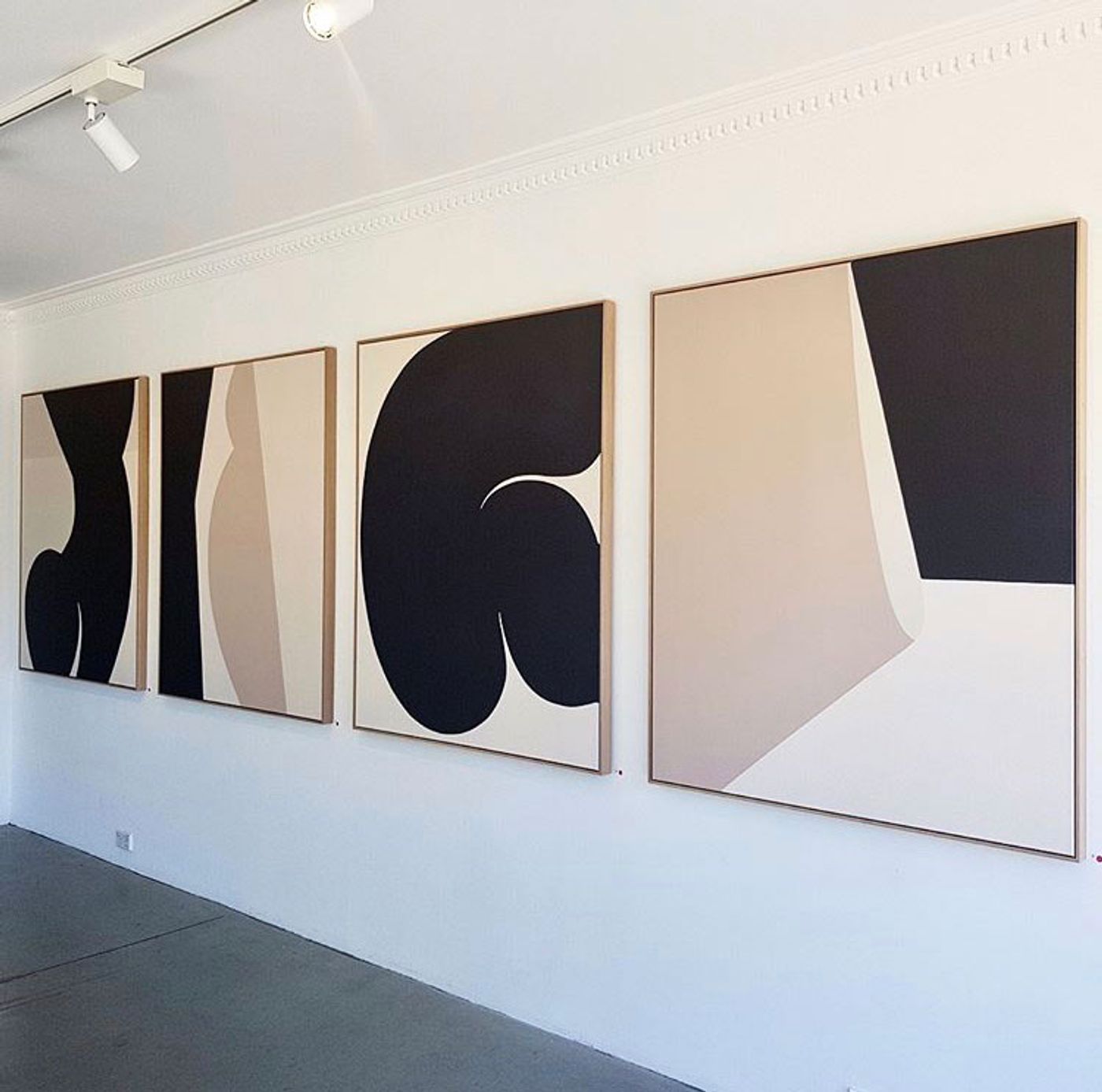
Photo by Caroline Walls.
Your paintings have a limited colour palette of dark blues and beige tones. Is this an aesthetic or conceptual choice?
On a really basic level my choice in using such a tight colour palette of nudes, neutrals, deep blues and blacks comes from a really pure and honest aesthetic response I have to these tones. Colour and the very subtle nuances in the colour palettes I create are paramount to the work that I produce. My use of line and form are minimal, bold and quite abstract so I look to colour to add depth and a sense of softness, and often an element of femininity to my pieces. The tones I mix take a lot of playing around to get them exactly how I want them as there is real intention behind my colour schemes which aim to resonate with the fleshy tones of supple skin.
Talk us through your work process. Do you draw preparatory sketches for your paintings? Do you use models or do you draw human figures intuitively?
I work fairly intuitively and on a number of pieces at any given time. I tend to spend a period of time developing and exploring compositional options, creating rough sketches and mapping out the colours I’d like to use before beginning a new series. In this sense, I much prefer to work on a collection of works together to form a broader narrative rather than just one isolated painting at a time. I generally know what I am going to paint before I put paint brush to canvas but I always leave room for movement if I feel like the forms could work better or colours can be reworked. I draw the curves and forms intuitively, rather than from models, as I feel like I can be freer and more spontaneous with my line work.
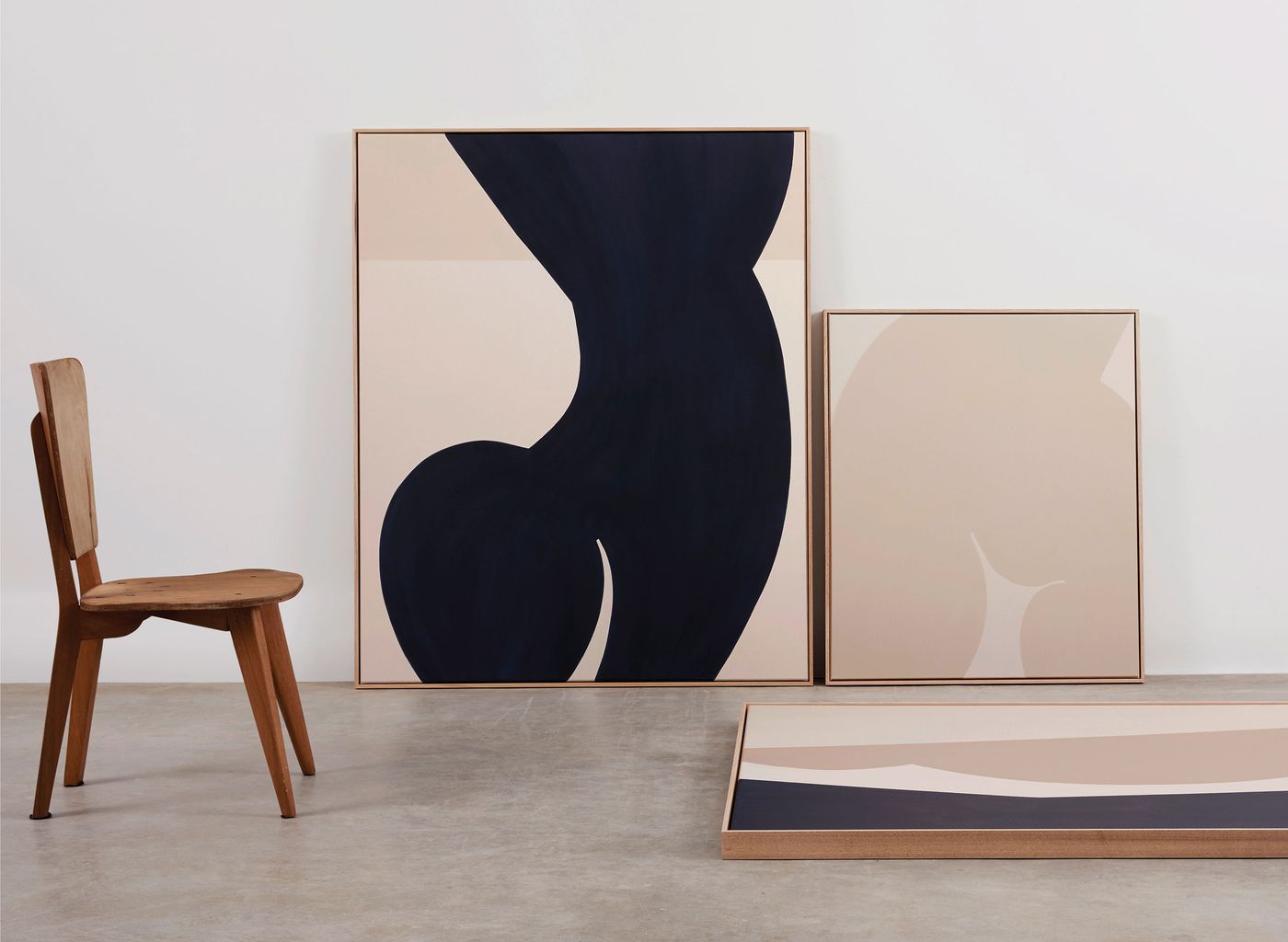
Photo © Caroline Walls.

Photo © Caroline Walls.
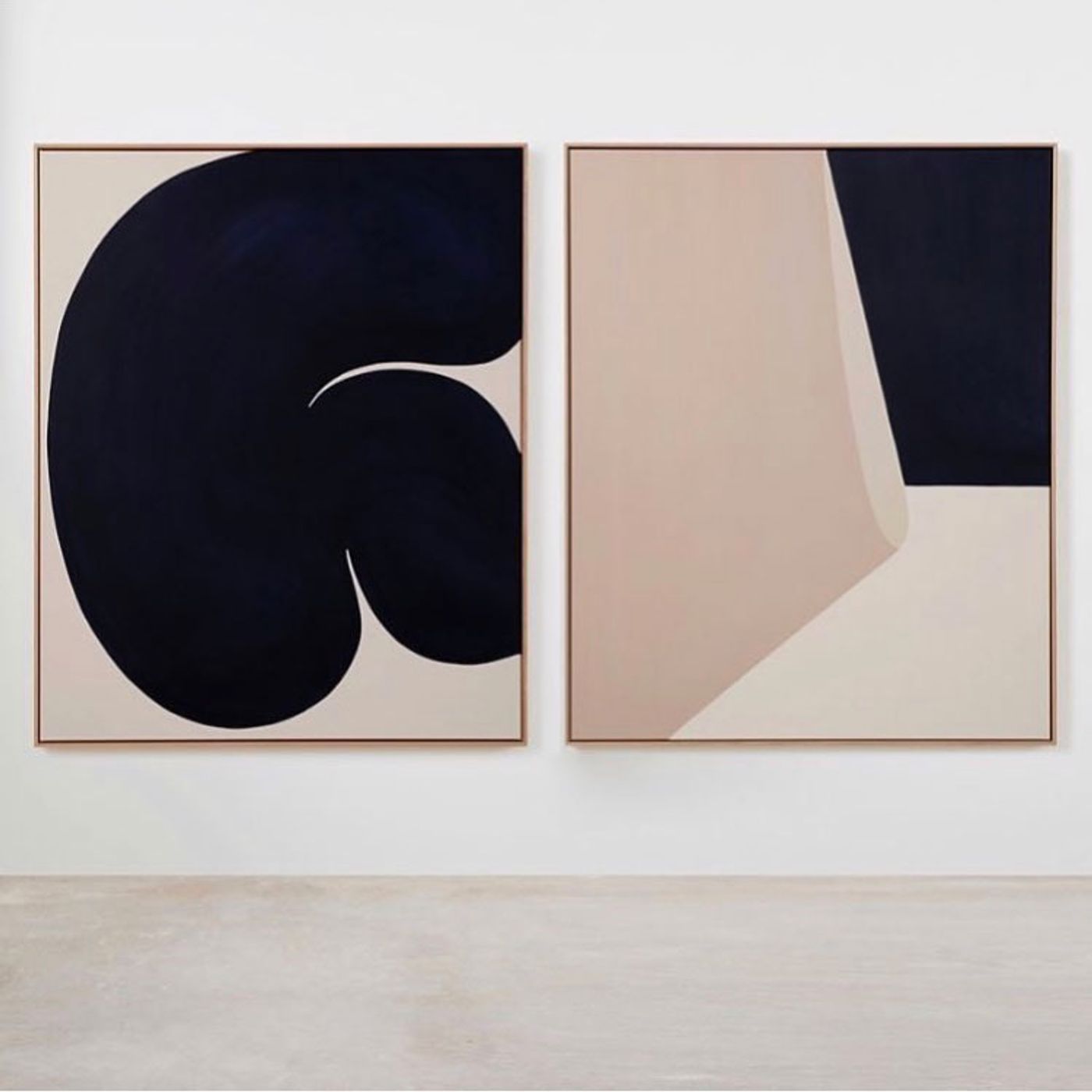
Photo © Caroline Walls.
You are a multi-disciplinary artist working with painting, drawing, soft sculpture and print-making. Why did you choose these media and how does each one influence the others?
My interest in working across multiple mediums is for varied reasons – it allows me to explore the same theme in many ways, to produce new and unique responses to the notion of the word female and what this word can evoke through varying the tactile and aesthetic qualities of each medium. The choice of medium can also dictate how spontaneous I can be—I choose drawing with charcoal for its ability to be really freeing and efficient and expressive—anytime or anywhere, whereas my paintings on canvas are made up of highly considered compositions that take more planning and a deeper thought process. I love sitting with a painting for hours and methodically apply layers and layers of paint—I find it’s really meditative.
What are you working on right now and what are your plans for your next exhibition?
I am currently working on my next solo exhibition, opening August 14th 2018 in Melbourne, Australia. The show will be a series of paintings exploring the boundaries of the female body—and how it has become a layer of armour between the inside of the body/mind and the outside world.
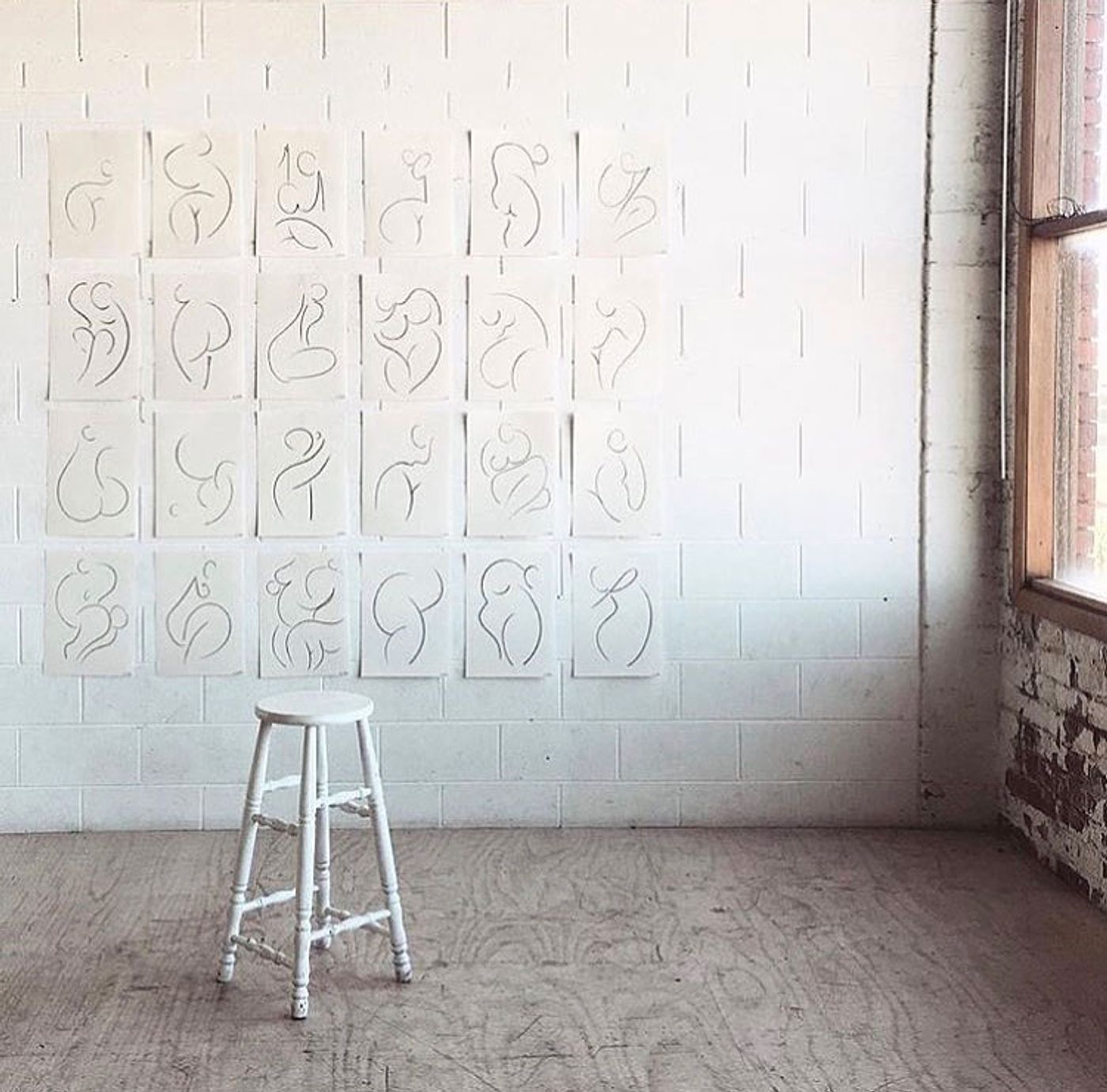
Photo © Caroline Walls.
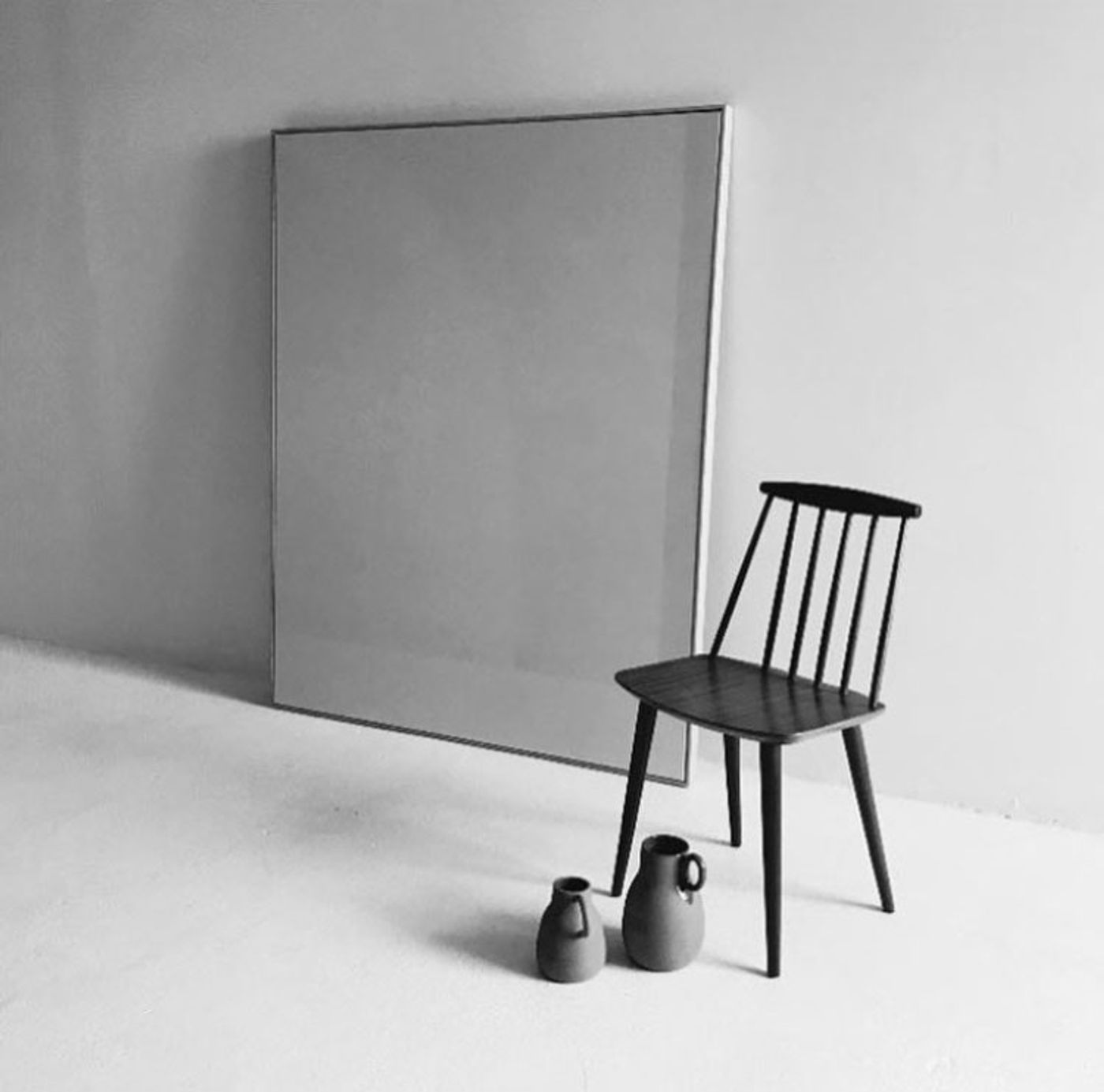
Photo © Caroline Walls.
It is as much about the lines that I choose to paint as it is about the lines and curves I choose to leave out. —Caroline Walls
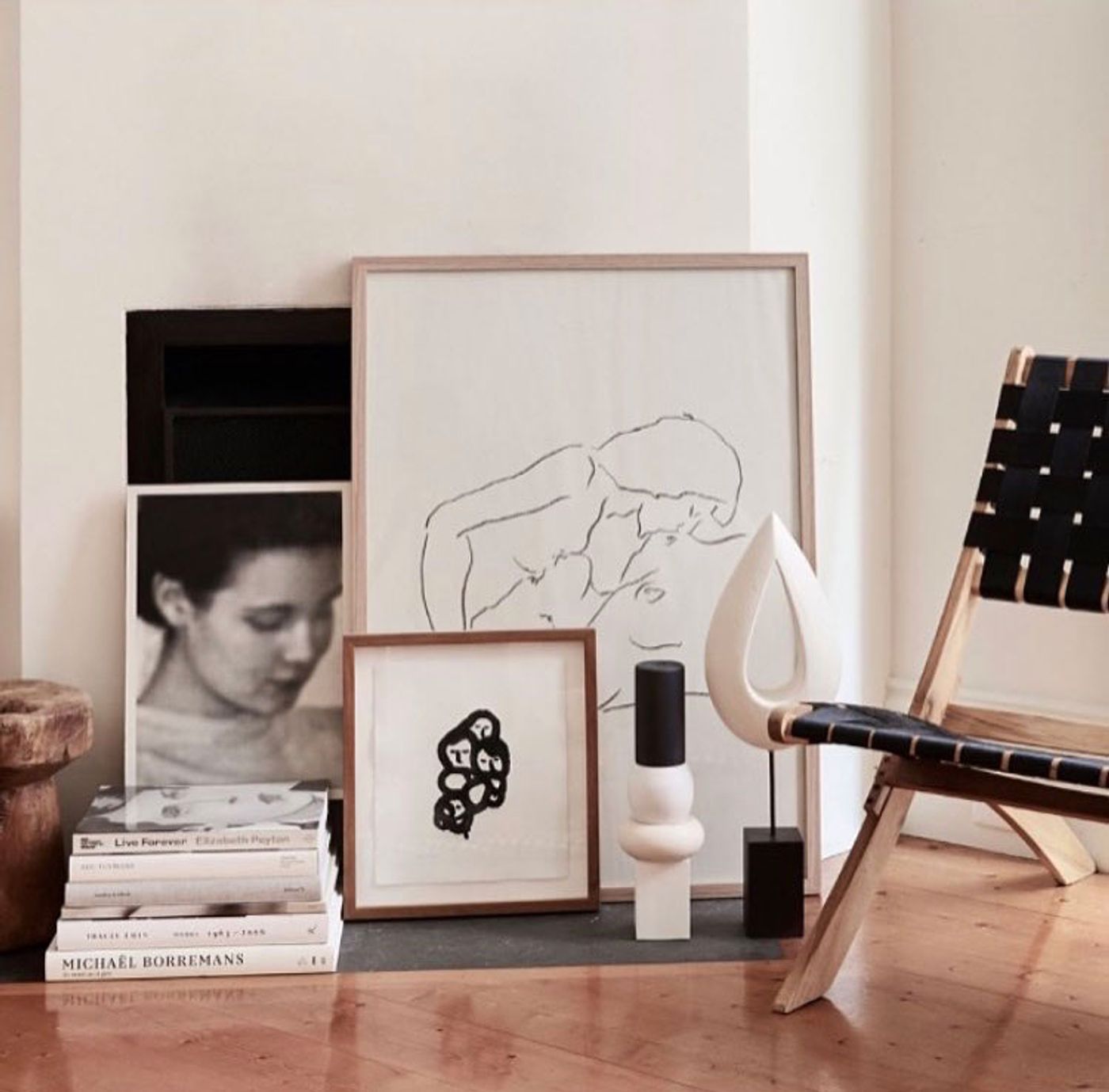
Photo © Caroline Walls.
